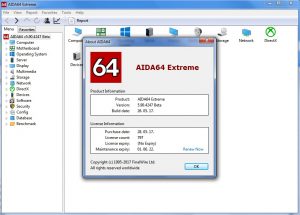
AIDA64 Extreme Edition 2.30.1911Beta(Murlok) Serial Key
Tutto Aida64 Extreme Edition 2.30.1911Beta(Murlok) Serial Key/Workaround crack and serial key free download and registration keygen and patch download and activation key for all. AIDA64 Extreme Edition 2.30.1911Beta(Murlok) Serial Key
AIDA64 Extreme Edition 2.30.1911Beta(Murlok) Serial Key is the latest version of AIDA64 Extreme Edition.. AIDA64 Extreme Edition 2.30.1911Beta(Murlok) Serial Key. AIDA64 Extreme Edition 2.30.1911Beta(Murlok) Serial Key Find the latest version of AIDA64 Extreme Edition here. This page displays all available options for AIDA64 Extreme Edition 2.30.1911Beta(Murlok) Serial Key..Adsorption characteristics of protein monolayers from monoclonal anti-GD3 antibody solution to hydrophobic zirconia and silica.
To clarify the mode of adsorption of protein monolayers to hydrophobic zirconia and silica, we characterized the protein adsorption behaviors to these materials in a 2-micromol/L solution of monoclonal anti-GD3 antibody. The protein adsorption behaviors were also compared with those of 10 nmol/L polystyrene latex particles. When protein adsorption was observed on hydrophobic zirconia and silica, adsorption of protein monolayers with a molecular weight of about 200 000 was observed, although the adsorption of polystyrene latex particles was not observed. The binding site density of the protein monolayer on zirconia was about 10(-4) mol/L2, which was about seven times higher than that on silica. The protein monolayers on hydrophobic zirconia and silica were completely reversible. The protein adsorption kinetics was very similar to that of the monolayer formation on polystyrene latex particles. In both cases, the adsorbed layer had a fractal character. The adsorbed protein layer was slightly swollen relative to the bulk solution. The zeta potential of the protein monolayer on hydrophobic zirconia and silica was positive, indicating its dissociation into a positively charged layer-associated state. It was suggested that the protein adsorption to hydrophobic zirconia and silica
There’s a lot of FREE Software that you can use to manage your PhotoShop Projects or edit your in AIDA64 Extreme Edition 2.30.1911Beta(Murlok) Serial Key your files. We.With recent advances in technology, the speed of high-performance computers, as well as, the amount of information that these computers process per unit time has increased significantly. This in turn, has increased the demand for high-capacity communication networks that allow electronic processing devices and data storage devices to exchange information. This, in turn, has also lead to advancements in the area of digital data transmission techniques.
Data is transferred across a communication network at a rate that provides the data to be properly decoded by the receiving network device. This rate is determined by a combination of factors, including the bit rate at which the data is transmitted (the baud rate), the modulation type of the digital data, the time interval between successive data bits (the bit time), and the coding scheme used to encode the data into digital words prior to being transmitted. Several transmission systems have been developed over the years to accommodate the different types of communication channels, including telephone lines, radio waves and optical fibers. The major types of digital data transmission systems include asynchronous transfer mode (ATM), synchronous optical network (SONET), asynchronous transfer mode (ATM), X.25, Ethernet, and short range RF (SRF), among others.
Of these techniques, Ethernet and SRF are used for high-capacity (bursty) data transmission. SONET, as the name implies, is used to carry continuous data in a bursty mode, whereas ATM is used for more sporadic data traffic.
The data bit-error rate that can be tolerated by a receiving data storage device is often specified in terms of a level of “bit error rate” or “BER”. Bit error rate is essentially the ratio of the number of bit errors detected in a given time interval over the total number of bits transmitted during the same interval. A higher bit error rate equals a lower throughput.
The net bit-error rate (BER) of a data transmission system is generally a complex function of several different factors, including the type of communication media used to transmit the data, the channel characteristics of the media (e.g., the communication channel length, width, and loss), and the nature of the data being transmitted. For example, in a high-capacity data transmission system such as an ATM or X.25 system,
f30f4ceada
https://thoitranghalo.com/2022/06/17/altium-designer-17-1-6-crack-work-with-license-download/
https://villarddelans-patinage.fr/advert/atomix-virtual-dj-v5-2-1-professional-key-rh/
http://jwmarine.org/charlie-and-the-chocolate-factory-full-movie-tagalog-version-13l/
https://qflash.es/gta-licence-key-work/
https://goodshape.s3.amazonaws.com/upload/files/2022/06/jV1PaeWvQHbF2t7jGp94_17_93d22b964d485be47312a6e138232e0a_file.pdf